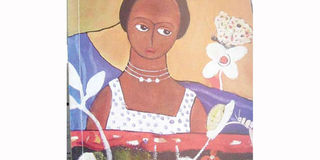Prime
A collection that celebrates children’s poetry

What you need to know:
Literature.
There are conversations with insects and birds, memories of times, places and country; the love for books, for school, naughty classroom experiences as well as facing up to school bullies, and the dangers of dodging classes to go swimming.
The Butterfly Dance: Words and Sounds of Colour is a song, short story and poetry collection that celebrates children’s poetry written by mothers and fathers, teachers and tutors, sisters and brothers.
This stripe of poetry is lined by what may be known as Nursery Rhymes or Mother Goose Rhymes.
Now, there is a theory that Mother Goose was a 17th-century Bostonian woman named either Elizabeth Foster Goose or Mary Goose, who entertained her grandchildren with rhymes. According to this theory, Goose’s son-in-law, a publisher, collected her rhymes and published them as a book.
The Butterfly Dance examines themes ranging from playing hide and seek (or hide and go seek, according to Americans) with grandpa, the love for papa and sweet mother, and the duty of protecting a little brother.
In a very fun manner, it skips poetic rope over garden and farm experiences, the enjoyment of tropical fruits. There are conversations with insects and birds, memories of times, places and country; the love for books, for school, naughty classroom experiences as well as facing up to school bullies, and the dangers of dodging classes to go swimming.
As each page is enlivened by the beauty of each word and inflection, games such as skipping, counting, dancing, drumming and letter writing are celebrated.
The sheer pleasure of this celebration to the reader is not only accessible through the words but also the images.
Taken together, the words and images (as well as the spirit which inheres both) captures a variety of children’s experiences from so many angles, in a very engaging and playful way.
Indeed, this anthology comprises 39 poems, 18 of which have been beautifully illustrated with accompanying paintings, and three with accompanying music.
The musical accompaniment creates a performance setting complete with mood and atmosphere which a bare-bones poem often fails to bring out in such primary and secondary colours.
The inter-textual celebration of words, pictures and music produces lively poetry and makes the poetic experience memorable for readers.
There are also five stories in this anthology, one has a painting illustration.
This book also has a teacher’s guide with simple questions to stimulate class, group and individual exploration of the poems and short stories.
The poems
Grand Pa, a poem by Winnifred Akeso, exemplifies the playful charm of the verse celebrated within these pages:
“You can run to hide
The old man starts to search
His walking stick
Making noises
Then
He goes quiet
He is slow, you think
Then-Boom!
Gotcha!”
It is easy going, suited to the togetherness of family. You may say that the words are child-like, instead of childish.
This distinction highlights the difference between believing with the open heart of a child and simply being a child.
Linda Lillian takes it to the bridge, as the musical expression goes, with the poem Our Dance:
“We danced the dance
To the left…to the right
To the sweet jingle
People clapped and blabbed
As we swept along the floor
The time had come at last
And we took the chance
Every once was balanced
Our bodies taut and ready
To announce us, for it was
Our dance our chance…”
To the uninitiated, the bridge of a song (in this case, a poem) is a pallet cleanser of sorts. Although at this stage of this deliciously put together book, we are already on the main course; in a manner of speaking.
However, the bridge does also function as a point of departure. We have danced through each theme with the abandon of a free-spirited reveller and it is at this point that the collection gathers up the elevated eloquence of a distinctly unique literary experience.




